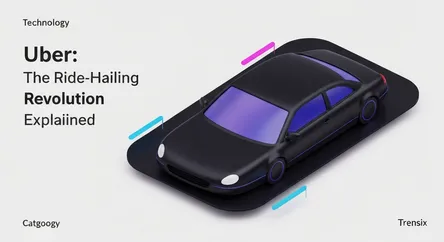Technology
Uber: The Ride-Hailing Revolution Explained

Discover Uber, the global platform that transformed urban mobility. Learn how it works, why it's popular, and its impact on cities and workers.
What is it?
Uber is a technology company that connects riders with drivers through a smartphone app. At its core, it's a ride-hailing service that allows users to book a ride from a nearby driver using their own vehicle. Founded in 2009, the platform revolutionized urban transportation by offering a convenient, on-demand alternative to traditional taxis. Beyond personal transport, Uber has expanded its services significantly to include food delivery with Uber Eats, package delivery, freight shipping, and even electric bike and scooter rentals. It operates in hundreds of cities worldwide, making it a global icon of the sharing economy.
Why is it trending?
Uber remains a hot topic due to its constant innovation and its central role in the gig economy. The platform's convenience, GPS tracking, and cashless payment system set a new standard for on-demand services. It's consistently in the news for its strategic moves, such as investing in autonomous vehicle technology, expanding into new markets, and navigating complex regulatory challenges. Ongoing discussions about driver classification—whether they are employees or independent contractors—also keep the company in the spotlight, sparking legal battles and public debate globally.
How does it affect people?
Uber's impact is multifaceted. For passengers, it provides a simple and often more affordable way to travel, increasing mobility options in many areas. For drivers, it offers a flexible source of income, allowing them to set their own hours. However, this flexibility comes with criticism regarding low pay, lack of benefits, and job instability. The service has also profoundly disrupted the traditional taxi industry, leading to a decline in taxi medallions' value and protests from legacy operators. Furthermore, its effect on traffic congestion and public transit usage remains a significant topic of study for urban planners.